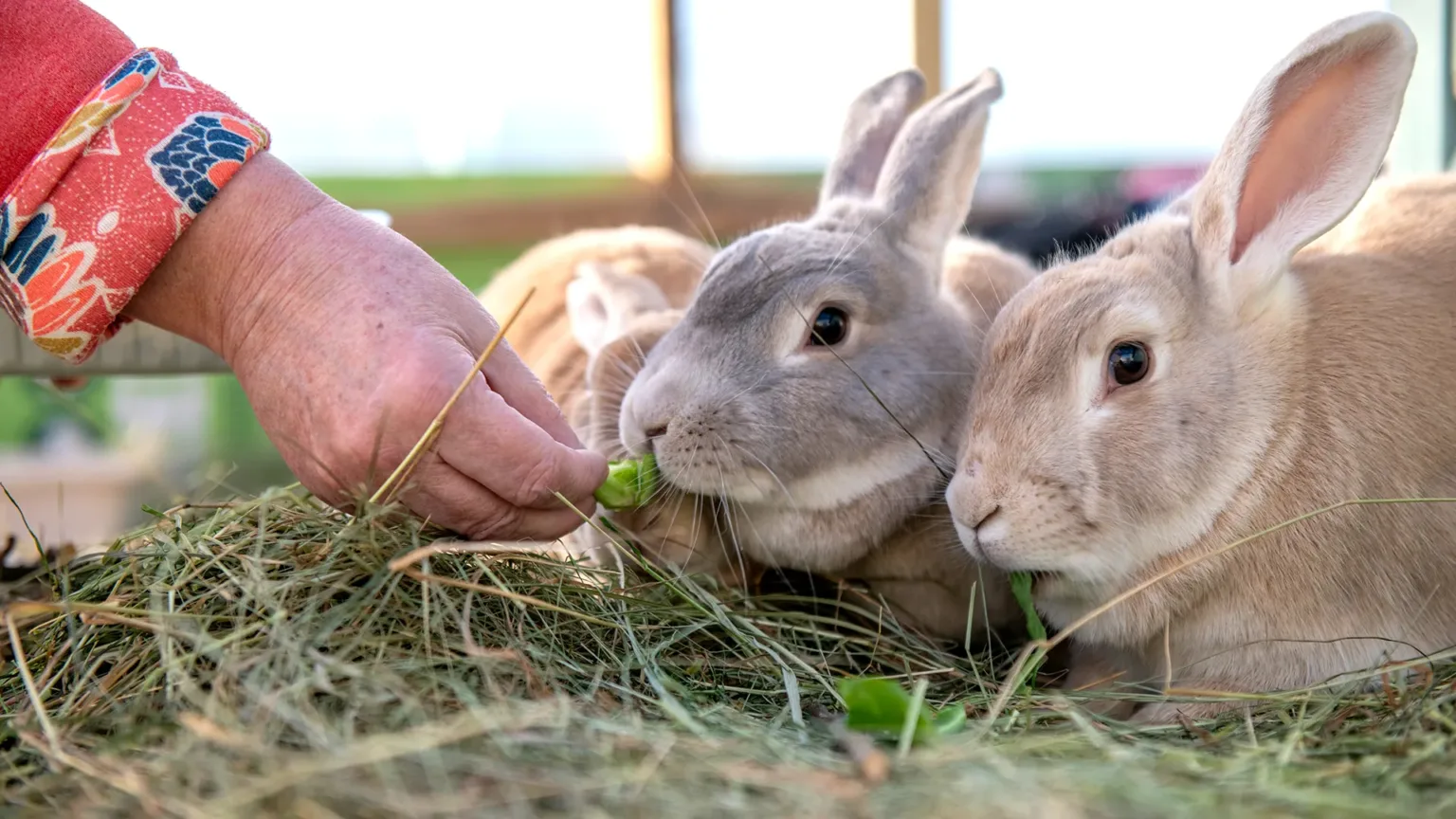When it comes to pets, we've all got questions
Ever feel like your pet is from another planet?

Rabbits are extremely social animals who depend on the companionship of other rabbits for security and comfort.
Many rabbits who live a life on their own will display behaviours that indicate they’re unhappy and stressed. These include:
The ideal combination of rabbits is a neutered male and neutered female rabbit. Try to match their ages as closely as possible to make sure their behaviour and mobility is equally matched.
You can bond different breeds together, although take care when considering a giant with a smaller breed. While many mismatched-size pairings work, there’s always a risk to the smaller rabbit during the mixing process.
Same-sex pairs can work, but it’s important they’re neutered as early as possible – ideally between four to six months – to prevent potentially fatal fights as they mature. If your rabbits have started fighting, neutering them and slowly introducing them back together may resolve it. However, often the rabbits are unable to move on from disliking each other.
If you find yourself with a lone rabbit of any age, contact your local rescue centre to help find your rabbit a companion.
First, make sure both rabbits are neutered. This not only prevents unwanted litters of rabbits but also help them bond with each other. If one or both rabbits aren’t neutered, they will often fight quite aggressively once mature. They may also regularly try to mount the neutered rabbit, which can result in arguments. Both rabbits should have recovered from their operations and be in good health before starting bonding.
When introducing rabbits, it is very important that this is carried out in neutral territory. At Woodgreen, we offer a mixing service where your rabbit can come and stay at the centre and be mixed in neutral territory under the watchful eye of an experienced member of the team. If you’re not able to visit the centre, make your area as neutral as possible. This can be done by:
Don’t use small spaces, hides, tunnels or small hutches to avoid the rabbits becoming cornered and provoking a fight. Spaces that are nice and open, around 10ft in length, but not too big are best.
Not all introductions are fast-paced. Your chosen area to mix will need to be uninterrupted for at least a week whilst your rabbits build a bond. The area needs to be safe from predators and not an area you need to use like a bathroom or kitchen.
Once you feel the rabbits and the accommodation are ready, you can start the mix. Make sure you have a towel ready to step in and separate them should a serious fight start. Always wear suitable footwear and clothing to avoid any injuries to yourself.
Place the rabbits down into the run at the exact same time, remove the carriers and step back to observe. Start the process when you’re able to monitor closely for several days like the weekend.
Rabbits sitting calmly at opposite ends of the accommodation, grooming themselves or feeding. This is an encouraging sign – your rabbits are relaxed in each other’s company.
Your rabbits sitting close together and grooming each other. This shows their bond is building nicely, and they may be ready to move into their permanent home in a few days.
When settling a newly bonded pair into their forever home, place some of the old hay from the mixing area into the hutch and run to help keep the ‘bonded smell.’
However, not all mixes are successful. Signs of hostility between two rabbits are obvious and dramatic and may include:
If these behaviours are seen on the first or start of the second day, you should separate the rabbits, as this mix is unlikely to work. Give both rabbits a full health check, looking for any fight wounds or injuries to their legs. Contact a rabbit-friendly vet if you’re concerned.
In some cases, it may be more suitable to do a ‘split mix’ over a period of one to two weeks. This will give a higher success rate if one or both of your rabbits have a history of being aggressive towards other rabbits.
A split mix is where you have a mesh divider in the accommodation with each rabbit living on either side. Every day, you swap their semi-clean litter trays over and place their water and litter trays next to the wire to encourage a slow bond. Once they appear nice and relaxed with each other, you can go on to a neutral mix where they are placed in together.
Although some owners have found a rabbit and guinea pig to live seemingly happily together, there is a big risk that the guinea pig will be accidentally kicked when the rabbit is running and hopping about.
Guinea pigs also communicate through sounds and a variety of body movements – it’s their way to communicate danger, anger, happiness and food availability. Rabbits use very little vocal noises other than to indicate severe pain and distress. It can be extremely distressing for a rabbit to have to keep listening to a guinea pig squeaking and for a guinea pig to live its life in silence without communication.
Rabbits and guinea pigs also have very different accommodation needs. Living together can mean that one or both are living in unsuitable enclosures.